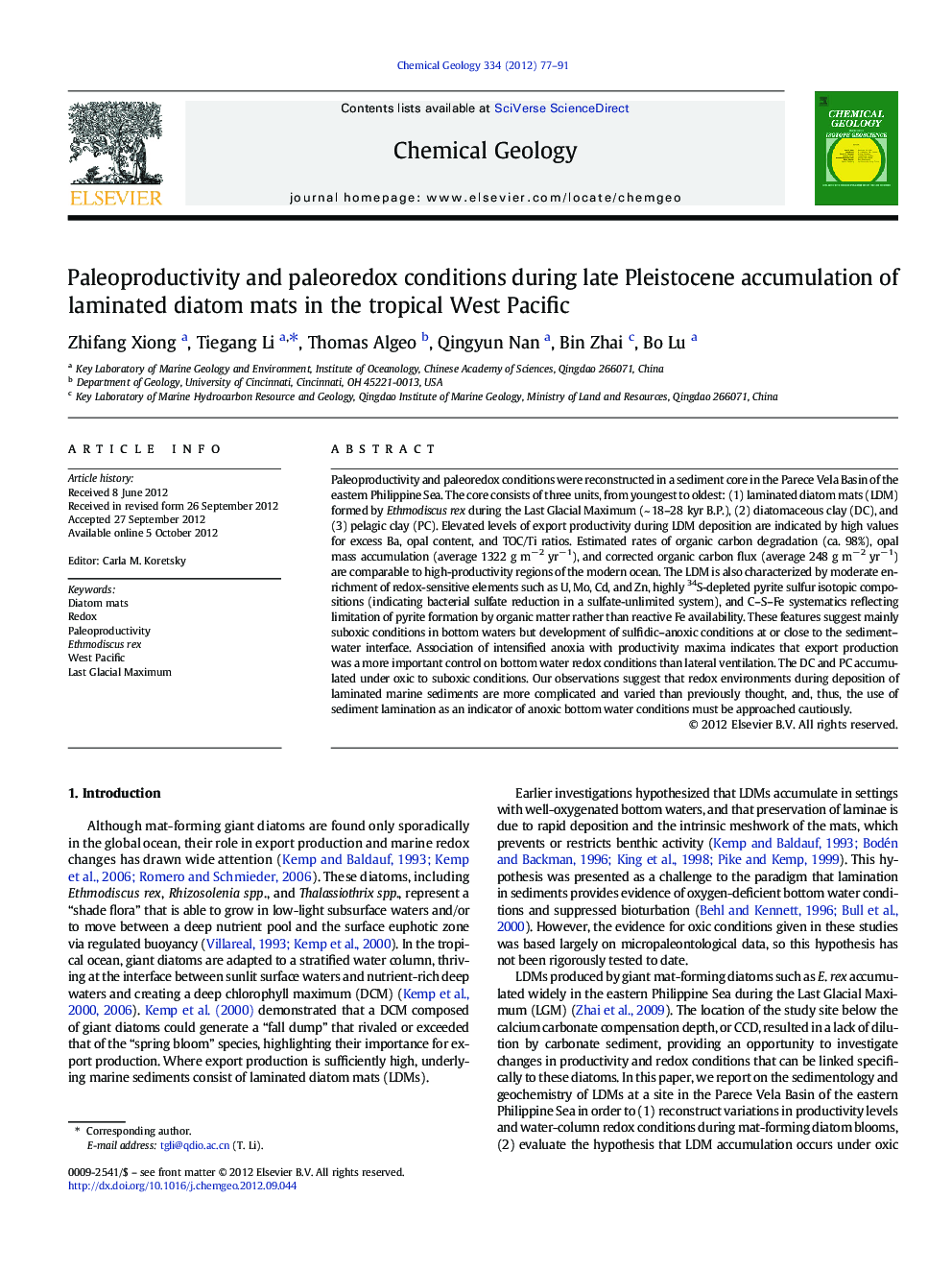| کد مقاله | کد نشریه | سال انتشار | مقاله انگلیسی | نسخه تمام متن |
|---|---|---|---|---|
| 4699172 | 1637633 | 2012 | 15 صفحه PDF | دانلود رایگان |

Paleoproductivity and paleoredox conditions were reconstructed in a sediment core in the Parece Vela Basin of the eastern Philippine Sea. The core consists of three units, from youngest to oldest: (1) laminated diatom mats (LDM) formed by Ethmodiscus rex during the Last Glacial Maximum (~ 18–28 kyr B.P.), (2) diatomaceous clay (DC), and (3) pelagic clay (PC). Elevated levels of export productivity during LDM deposition are indicated by high values for excess Ba, opal content, and TOC/Ti ratios. Estimated rates of organic carbon degradation (ca. 98%), opal mass accumulation (average 1322 g m− 2 yr− 1), and corrected organic carbon flux (average 248 g m− 2 yr− 1) are comparable to high-productivity regions of the modern ocean. The LDM is also characterized by moderate enrichment of redox-sensitive elements such as U, Mo, Cd, and Zn, highly 34S-depleted pyrite sulfur isotopic compositions (indicating bacterial sulfate reduction in a sulfate-unlimited system), and C–S–Fe systematics reflecting limitation of pyrite formation by organic matter rather than reactive Fe availability. These features suggest mainly suboxic conditions in bottom waters but development of sulfidic–anoxic conditions at or close to the sediment–water interface. Association of intensified anoxia with productivity maxima indicates that export production was a more important control on bottom water redox conditions than lateral ventilation. The DC and PC accumulated under oxic to suboxic conditions. Our observations suggest that redox environments during deposition of laminated marine sediments are more complicated and varied than previously thought, and, thus, the use of sediment lamination as an indicator of anoxic bottom water conditions must be approached cautiously.
► LDM was deposited under sulfidic–anoxic conditions with suboxic bottom waters.
► BSR occurred in an open, sulfate-unlimited system.
► Pyrite formation was limited by organic matter rather than reactive Fe.
► Elevated export productivity rather than later ventilation resulted in reducing conditions during LDM formation.
► Sediment lamination as an indicator of anoxic bottom water conditions must be approached cautiously.
Journal: Chemical Geology - Volume 334, 12 December 2012, Pages 77–91